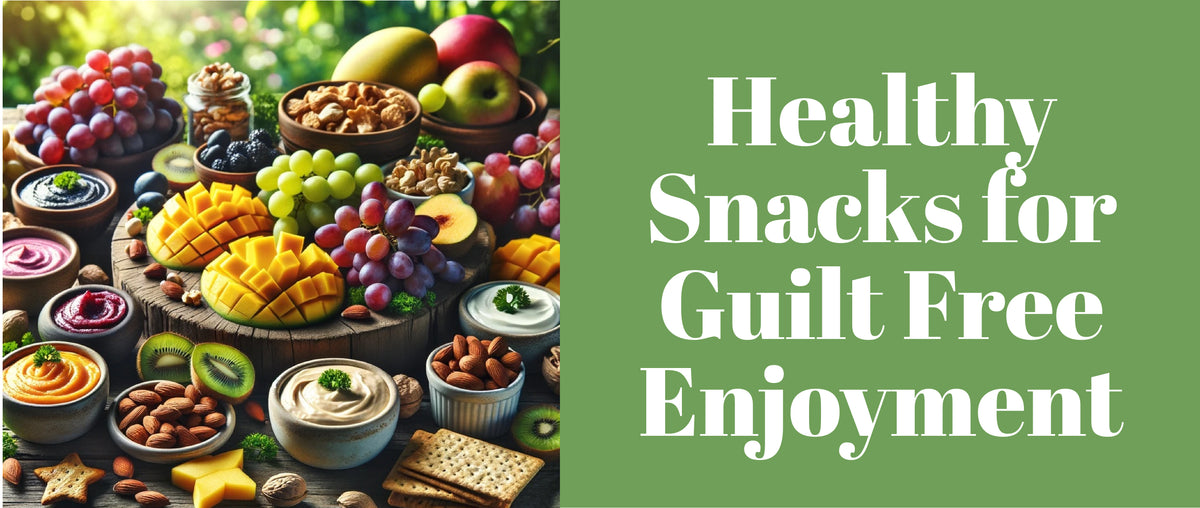How to Create a Healthy Eating Plan That Works for You
Creating a healthy eating plan tailored to your individual needs and preferences is essential for maintaining overall well-being. A well-balanced, nutritious diet can help manage weight, reduce the risk of chronic diseases, and improve your overall quality of life. By incorporating plant based foods and other cholesterol-free foods, you can achieve a sustainable and satisfying eating pattern.
Key Takeaways
- Understand your nutritional needs.
- Emphasize whole, plant-based foods.
- Plan and prepare meals ahead of time.
- Incorporate a variety of food groups.
- Monitor and adjust your eating plan as needed.
Understanding Your Nutritional Needs
Determining Daily Calorie Needs
To start, it's crucial to understand your daily calorie requirements. These depend on various factors such as age, gender, weight, height, and activity level. Tools like the Body Weight Planner from the National Institutes of Health can help you determine your daily caloric needs to maintain or achieve a healthy weight.
Importance of Macronutrients
Macronutrients, including carbohydrates, proteins, and fats, are essential for providing energy and supporting bodily functions. Each macronutrient plays a unique role:
- Carbohydrates: Provide energy and should come from whole grains, fruits, and vegetables.
- Proteins: Support muscle repair and growth. Opt for plant-based protein sources like beans, lentils, and high protein vegan foods.
- Fats: Necessary for hormone production and nutrient absorption. Choose healthy fats from sources like avocados, nuts, and unsalted butter.

Building a Plan for Healthy Eating
Creating a healthy eating plan involves selecting nutrient-dense foods that provide essential vitamins and minerals. Focus on incorporating a variety of plant based foods such as fruits, vegetables, whole grains, and legumes. These foods are rich in fiber, antioxidants, and phytonutrients, which are beneficial for health.
Emphasizing Whole Foods
Whole foods are minimally processed and retain their natural nutrients. Aim to include a diverse range of fruits, vegetables, whole grains, and plant based proteins in your diet. Foods like Vegan Cheese, Oat Milk, and Cashew Butter are excellent choices for a nutrient-rich diet.
Including Lean Proteins
Proteins are crucial for muscle repair, immune function, and overall health. Lean protein sources include beans, lentils, nuts, seeds, and high protein vegan breakfast options. For example, incorporating Vegan Cheese and Garlic Butter into your meals can provide variety and flavor without the added cholesterol.
Limiting Unhealthy Fats and Sugars
While fats are essential, it’s important to limit saturated and trans fats. Opt for healthy fats found in avocados, nuts, and seeds. Additionally, reduce your intake of added sugars by choosing low fat mayonnaise and Unsalted Butter.
Plan Ahead for Healthy Eating
Meal planning is a vital step in creating a sustainable and healthy diet. By planning your meals in advance, you can ensure a balanced intake of nutrients and avoid the temptation of unhealthy options. Use tools like meal planning apps or templates to organize your weekly menus.
Tips for Grocery Shopping
When grocery shopping, focus on purchasing a variety of plant based foods and cholesterol free foods. Make a list of healthy items such as Kombucha , parmesan cheese India, and High Protein Vegan Food to keep you on track.
Sample Meal Plans and Recipes
Creating sample meal plans can help you stick to your healthy eating goals. Incorporate a variety of foods such as Healthy Snacks for Kids, Vegan Cheese, and Garlic Butter into your daily meals. Consider using recipes that emphasize whole, nutrient-dense ingredients.
Eat Lots of Fruit and Veg
Benefits of Fruits and Vegetables
Fruits and vegetables are packed with essential vitamins, minerals, and fiber. They help reduce the risk of chronic diseases and support overall health. Aim to include at least five servings of fruits and vegetables in your daily diet. Fresh, frozen, and even canned varieties (without added sugars or salt) are all good options.
Eat Less Salt
The Impact of Salt on Health
Excessive salt intake can lead to high blood pressure and increase the risk of heart disease and stroke. It's important to be mindful of your salt consumption and make efforts to reduce it.
- Cook with herbs and spices instead of salt.
- Choose fresh or frozen vegetables over canned ones.
- Read nutrition labels to check for hidden sodium in packaged foods.
- Use products like unsalted butter to control your salt intake.
What to Eat for a Healthy Balanced Diet
Overview of a Balanced Diet
A balanced diet includes a variety of foods from all food groups to ensure you're getting the necessary nutrients. Incorporate carbohydrates, proteins, fats, vitamins, and minerals into your meals. Foods like vegan cheese and garlic butter can add flavor while keeping your diet balanced.
Examples of Balanced Meals
Balanced meals might include a combination of plant-based proteins, whole grains, fruits, and vegetables. For instance, a salad with mixed greens, quinoa, chickpeas, and parmesan cheese can be a nutritious and satisfying meal.
Why Nutrition is Important for a Healthy and Balanced Diet
Role of Nutrition in Overall Health
Good nutrition is fundamental to maintaining health and preventing diseases. A diet rich in plant-based foods and cholesterol-free foods supports bodily functions, boosts immunity, and promotes long-term health.
Long-term Benefits of a Nutritious Diet
Eating a balanced diet can help you maintain a healthy weight, reduce the risk of chronic diseases, and improve mental health. Foods like kombucha, Cashew Butter, and Oat Milk provide essential nutrients that contribute to overall well-being.
Nutrition and Healthy Eating
Guidelines for Healthy Eating Habits
Maintaining a balanced diet involves more than just choosing the right foods. It also includes eating at regular intervals, controlling portion sizes, and staying hydrated. Incorporate a variety of plant based foods like vegan cheese and high protein vegan breakfast options to meet your nutritional needs.
Importance of Variety in Diet
Eating a variety of foods ensures that you get a wide range of nutrients. Different foods provide different vitamins and minerals, so including diverse foods in your diet is crucial for maintaining good health.
Healthy Meals Start with Planning
Steps for Effective Meal Planning
Effective meal planning involves setting aside time each week to plan your meals, make a shopping list, and prepare ingredients. This can help you avoid last-minute unhealthy choices and ensure you have everything you need for nutritious meals.
Tools and Resources for Meal Preparation
Utilize meal planning apps, cookbooks, and online resources to find recipes and organize your meals. Incorporate foods like kombucha, Oat Milk, and vegan butter into your recipes to add variety and nutrition.
Monitoring and Adjusting Your Plan
Tracking Your Progress
Regularly monitor your food intake, weight, and overall health to ensure your eating plan is working for you. Use apps or food journals to track what you eat and make necessary adjustments to stay on track with your healthy diet goals.
Making Necessary Adjustments
If you find that certain aspects of your eating plan aren’t working, don’t be afraid to make changes. Adjust your portion sizes, try new recipes, or incorporate different foods like high protein vegan snacks to keep your diet balanced and enjoyable.
Conclusion
Creating a personalized healthy eating plan involves understanding your nutritional needs, planning ahead, and incorporating a variety of plant-based foods. Regular monitoring and adjustments will help you stay on track and achieve your health goals.
Do you enjoy vegan food? We have a list of vegan restaurants in India to help you find delicious options in your area!










